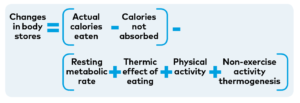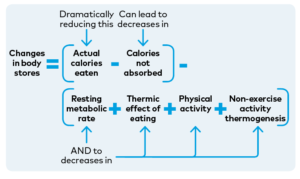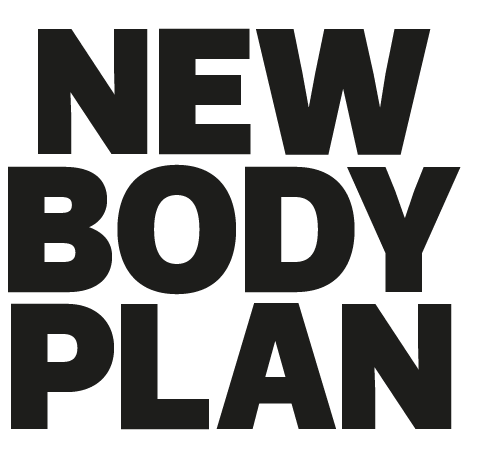The 4 ways your body burns calories each day
To burn body fat quickly and safely you need to be in a small and sustainable calorie deficit. But accurately estimating your daily energy expenditure can be incredibly difficult, so if you want to lose weight fast you need to get smart, says New Body Plan editor Joe Warner
Estimating how many calories you need each day is relatively easy to calculate. But the big problem is that it’s almost impossible to know exactly how many calories you are consuming each day. Another major issue is that it’s just as hard, if not harder, to estimate how many calories you burn per day.
In this post we’re going to look at the “Energy Out” part of the Energy Balance Equation, because there are some big issues with that, just as there are with the “Energy In” part. Before we get to that, however, here’s the details on the four ways your body burns calories.
1 Resting metabolic rate
Your resting metabolic rate (RMR) is the number of calories you burn each day at rest, just breathing, thinking and living. It represents around 60% of your daily energy expenditure and depends on your weight, body composition, sex, age, genetic predisposition, and the bacteria in your gut. In general a bigger body has a higher RMR, yet it can vary up to 15% from person to person. If you weigh 200lb (14st 4lb) with an RMR of 1,905 calories, someone else who weighs exactly the same as you could burn 286 more (or fewer) calories each day with no more (or less) effort!
2 Thermic effect of eating
That’s right, it takes energy to process food. The thermic effect of eating (TEE) is the number of calories you burn by eating, digesting and absorbing food and it represents around 5-10% of your daily energy expenditure.
You’ll burn more calories digesting and absorbing protein (around 20-30% of its calories) than carbs (5-6%) or fats (3%), and you also burn more calories digesting natural whole foods than you do highly processed foods. If you’ve ever had the “meat sweats” or felt hot after a big protein-rich meal, that’s TEE in action!
3 Physical activity
Physical activity (PA) is the number of calories you burn from purposeful exercise, such as walking, running, going to the gym, gardening, cycling or other physical activities. Obviously, how much energy you expend through PA is determined by how much you intentionally move around.
4 Non-exercise activity thermogenesis
Non-exercise activity thermogenesis (NEAT) is the calories you burn through fidgeting, staying upright and all other physical movements that don’t count as PA.
NEAT output can vary tremendously between individuals. In studies where people are overfed, some individuals burn off 70% of those extra calories through NEAT alone, while others actually burn less! And in studies where people are underfed, some subjects’ NEAT output dropped dramatically (making it harder for them to lose weight), while others had minimal change in their NEAT output (making it easier for them to lose weight). Ultimately, NEAT output can vary by as many as 2,000 calories between individuals!
To find your perfect transformation plan, take the New Body quiz!
Take the New Body quiz!
How many calories are you really burning?
All this means the “Energy Out” side of the Energy Balance Equation should actually look more like this:

Each of these four factors is highly variable and constantly changing, making the “Energy Out” side of the Energy Balance Equation as hard to calculate as the “Energy In” side.
So, while the equation seems simple in theory, all these variables make it very hard – perhaps impossible – to know or control exactly how much energy you’re taking in, absorbing, burning and storing each day.
Here’s what the Energy Balance Equation actually looks like:

How to eat for a leaner and stronger body
Even if all the variables in the Energy Balance Equation were static, it is still very complicated to comprehend. But these variables are never static, not least because when one variable changes it will cause a change in others.
This is a good thing, of course. The human metabolism evolved to keep us alive when food was scarce. But this means that when “Energy In” goes down, “Energy Out” goes down too.
In other words, your metabolism slows in response to eating less, so you burn fewer calories. This doesn’t happen in everybody, nor in a uniform way, but it’s how the metabolic system is supposed to work. To illustrate this point, here’s how your body adjusts the Energy Balance Equation to prevent rapid weight loss in response to a dramatic reduction in your calorie intake, such as when going on a “quick-fix” or “detox” diet. It’s one of the main reasons why detox diets don’t work.

Tracking your energy expenditure
Ultimately, estimating your calorie expenditure is fraught with uncertainties and potential errors. As we’ve discussed, the food you eat affects how many calories you burn (digesting protein causes more calories to be burned than carbs or fats), and unprocessed whole foods provide fewer dietary calories and require more calories to digest than highly processed foods.
But there’s more. A single night of sleep deprivation can cause your metabolism to burn as much as 20% fewer calories the following day. Just to complicate matters, your brain will seek out high-sugar and high-fat foods in response to tiredness!
Your previous weight history also influences how many calories you burn. If you’ve ever been overweight or obese, your metabolic rate may be about 10% lower than someone of the same weight, age, sex and body composition who was never overweight or obese.
So it’s almost impossible to accurately know how many calories you burn each day. Even fitness trackers, which are excellent at monitoring your heart rate, have been found to miscalculate calorie expenditure by up to 30%!
Just like your “Energy In” number, your “Energy Out” estimate can also be wrong by as much as 20% – a massive margin of error for something so important to your health and happiness!
A smarter nutrition approach for fat loss
Calorie expenditure estimates are imprecise and people burn calories at unique and variable rates. Metabolic responses to overeating and undereating vary tremendously between individuals, and other factors including your previous weight history also affect how many calories you burn daily. This means that calorie counting is a fundamentally flawed approach. Luckily there is a better way, and we call it the Perfect Portion approach for eating for fat loss!
To find your perfect transformation plan, take the New Body quiz!
Take the New Body quiz!
3 things I wish I’d known when trying to get lean and lose weight

